 I’ve written before about the beautiful ocean just a stone’s throw away from my house here in Poutasi. I spend a huge amount of time sitting by the sea in a small fale (fah´-lay) (a house with a peaked roof, often thatch, which is open on all four sides supported by posts). I read and write there. I talk to the kids who stop by. I watch the fishermen. I look at the always changing sea and clouds, and photograph sunset after sunset. I hardly know what I would do if I didn’t have that lovely place to sit and meditate and restore myself. Even in Samoa, some Peace Corps volunteers don’t have the ocean outside their back door.
I’ve written before about the beautiful ocean just a stone’s throw away from my house here in Poutasi. I spend a huge amount of time sitting by the sea in a small fale (fah´-lay) (a house with a peaked roof, often thatch, which is open on all four sides supported by posts). I read and write there. I talk to the kids who stop by. I watch the fishermen. I look at the always changing sea and clouds, and photograph sunset after sunset. I hardly know what I would do if I didn’t have that lovely place to sit and meditate and restore myself. Even in Samoa, some Peace Corps volunteers don’t have the ocean outside their back door.It’s difficult to describe it to you adequately, so that you can appreciate how lovely it is. The water is crystal clear, and changes from shades of aquamarine to deep blue, depending on the time of day. I can see fish swimming by while sitting in my chair. The lagoon in front of the village is protected by an an island an a barrier reef. While the ocean waves crash on the reef creating an omnipresent roar of the surf, the water inside the reef is calm and shallow. There is deeper water near the island, but the rest of the lagoon is only about waist deep. Inland there are mangrove marshes where fresh springs feed into the ocean.
changes from shades of aquamarine to deep blue, depending on the time of day. I can see fish swimming by while sitting in my chair. The lagoon in front of the village is protected by an an island an a barrier reef. While the ocean waves crash on the reef creating an omnipresent roar of the surf, the water inside the reef is calm and shallow. There is deeper water near the island, but the rest of the lagoon is only about waist deep. Inland there are mangrove marshes where fresh springs feed into the ocean.
 changes from shades of aquamarine to deep blue, depending on the time of day. I can see fish swimming by while sitting in my chair. The lagoon in front of the village is protected by an an island an a barrier reef. While the ocean waves crash on the reef creating an omnipresent roar of the surf, the water inside the reef is calm and shallow. There is deeper water near the island, but the rest of the lagoon is only about waist deep. Inland there are mangrove marshes where fresh springs feed into the ocean.
changes from shades of aquamarine to deep blue, depending on the time of day. I can see fish swimming by while sitting in my chair. The lagoon in front of the village is protected by an an island an a barrier reef. While the ocean waves crash on the reef creating an omnipresent roar of the surf, the water inside the reef is calm and shallow. There is deeper water near the island, but the rest of the lagoon is only about waist deep. Inland there are mangrove marshes where fresh springs feed into the ocean.Earlier I wrote about receiving funding from the United Nations Development Project, Small Grants Program. Like everything here in Samoa it has been moving along slowly. One of the first things that we did, with the assistance of experts from the Ministry of Natural Resources and Environment, was a baseline survey of the ocean lagoon and mangrove marshes. I went with them tramping through the marshes and snorkeling, taking underwater photos. As the joking saying goes, “A tough job, but someone has to do it!”
 The really great news about that survey is that the coral inside the reef is healthy and recovering from previous damage. Much of the damage was from cyclones (hurricanes), but also from fishing with dynamite and poison in years past; that has since been outlawed. It’s great to see new coral polyps growing on the old dead coral. The mangrove marshes are also healthy with young mangrove trees growing naturally. And since coral and mangroves provide safe havens for small fish, it was also gratifying to see many small fish species too.
The really great news about that survey is that the coral inside the reef is healthy and recovering from previous damage. Much of the damage was from cyclones (hurricanes), but also from fishing with dynamite and poison in years past; that has since been outlawed. It’s great to see new coral polyps growing on the old dead coral. The mangrove marshes are also healthy with young mangrove trees growing naturally. And since coral and mangroves provide safe havens for small fish, it was also gratifying to see many small fish species too.I won’t go into a lot of detail, but I’ve learned so much about the marine environment that I never knew. Mangroves are amazing trees that are not only part of the cycle of ocean life, but also protect the coastline from erosion and cyclone damage.
The original plan included coral gardening to restore the coral, cement fish houses (a space for the small fish to hide), and a mangrove nursery. Fortunately, we won’t need to do the coral gardening, fish houses, or the mangrove nursery; we just need to protect what we have.
After numerous meetings and delays, we have finally reached the point of marking the marine protected area (in Samoan fa’asao). An area is marked with cement anchors, ropes and floats, and also with upright sticks which are more visible. It is off-limits to fishermen, providing a protected area for the coral and the fish, clams, sea urchins, etc. – essentially a fish nursery. Some of the villagers were reluctant at first, thinking that it would reduce their ability to catch fish. But it was explained to them that the fish don’t know that the boundaries are there, and when they get big they will venture out from the reserved area and then they can catch them (and there will be more of them).
Now we are in the process of drafting a management plan for the project to be adopted by the village chiefs, and hopefully enforced. There will be fines paid to the village council if people fish in the protected area.
We also had a village cleanup this week which is technically part of the project. Poutasi is actually a pretty clean village compared to some others I’ve seen, but inevitably there is rubbish that accumulates. People burn their paper rubbish, but cans and plastics tend to accumulate in piles behind the houses. We provided bags (used 50 pound plastic flour bags) to everyone and told them to put the small items in the bags and put them on the road in front of their houses. Larger items such as old appliances and such could just be moved to the road. Then we had a truck come and pick up everything and take it to the landfill. The plan is for this to be an ongoing village activity once a month. Villagers also walked along the beach picking up rubbish that had accumulated there. We’ll be putting two large cages (about eight feet long and four feet high) on the two main roads in the village to hold recyclable plastic bottles to be picked up periodically.
The next major step is a five-day workshop in the village presented by a local non-profit, Small Business Enterprise Corporation. The main purpose of the workshop is to teach villagers how to set up and operate a small business in anticipation of some ecotourism projects in the village. This village has so much to offer. I visualize tourists in a hand-
 made outrigger canoe, paddled by a local guide who is telling them about this intricate beautiful ecosystem, silently slipping through the myriad channels of water with mangroves and giant ferns on all sides, hearing only the birds chirping and warbling. Then a trip to the uninhabited island with pristine beach and lush tropical foliage, where they can drink the water from a freshly picked coconut, eat a picnic lunch, swim and snorkel. Returning to the village they can be offered locally hand-made crafts to purchase. To the east and west of the village are popular tourist beaches and resorts. Nearly every tourist who rents a car drives down the road which intersects with the road into the village.
made outrigger canoe, paddled by a local guide who is telling them about this intricate beautiful ecosystem, silently slipping through the myriad channels of water with mangroves and giant ferns on all sides, hearing only the birds chirping and warbling. Then a trip to the uninhabited island with pristine beach and lush tropical foliage, where they can drink the water from a freshly picked coconut, eat a picnic lunch, swim and snorkel. Returning to the village they can be offered locally hand-made crafts to purchase. To the east and west of the village are popular tourist beaches and resorts. Nearly every tourist who rents a car drives down the road which intersects with the road into the village.There are other aspects of the project yet to be completed – planting more native trees along the waterfront at the ocean and the natural springs to reduce erosion, and repairing a small water reservoir at one of the natural springs that no longer holds water.
Of course the plan is for all of this to continue long after I leave the village. I’m hopeful that it will not only create a source of viable income, but also help preserve and protect this wonderful place for future generations.
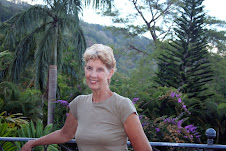
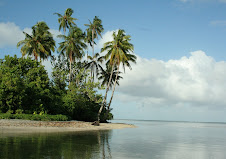
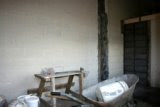
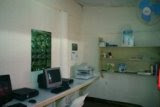
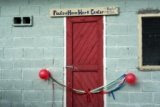
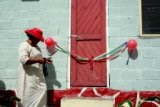
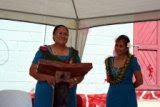
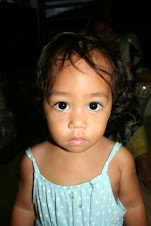
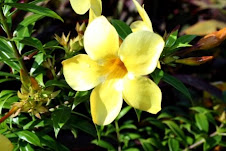
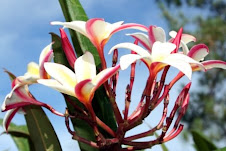
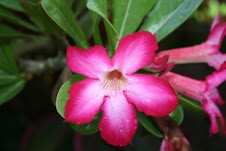

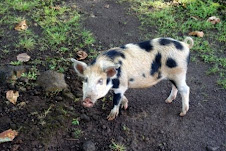

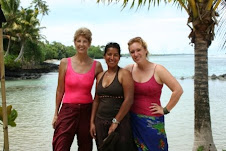

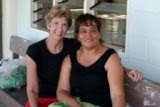

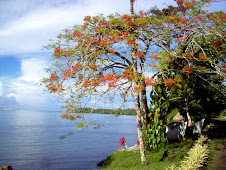
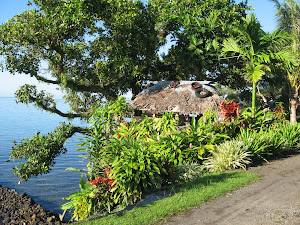
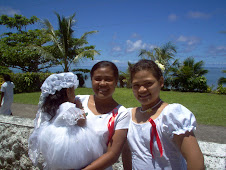
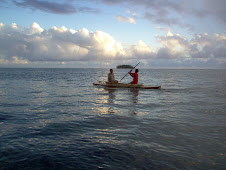

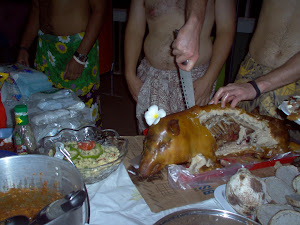
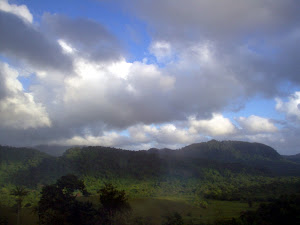
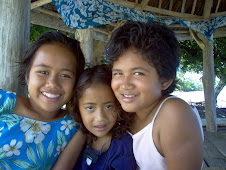.jpg)
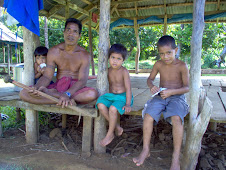



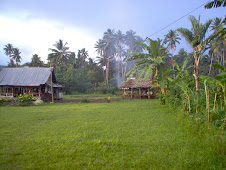



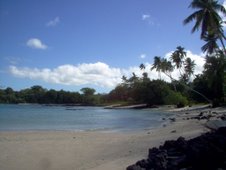
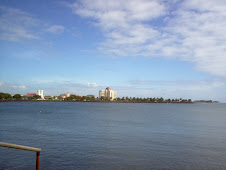

1 comment:
Your tatto is very tasteful...I would even get one if it looked like that! Your project sounds wonderful in your village, the scenario you describe in the fantasy tourist day sounds like a dream. We are coming to Samoa in May....we may have to check out your village (our daughter is with group 79)
Post a Comment